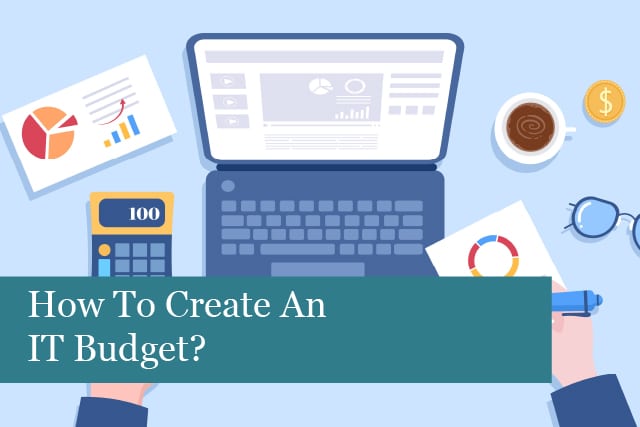
Introduction
Creating an IT budget is a critical task for any organisation, whether it’s a small startup or a large enterprise. A well-crafted IT budget ensures that your technology needs are met efficiently and cost-effectively. In this comprehensive guide, we’ll walk you through the process of creating an IT budget step by step. From understanding the basics to diving into the nitty-gritty details, we’ve got you covered.
1. How To Create An IT Budget?
In this section, we’ll delve into the core steps of creating an IT budget, setting the stage for a successful budgeting process.
Defining Your IT Goals
Before you can allocate resources, you need to establish clear IT goals. What are you trying to achieve with your technology investments? How do these goals align with your overall business strategy?
Identifying IT Expenses
List all your IT-related expenses. This includes hardware, software, maintenance, and personnel costs. A detailed breakdown is essential for accurate budgeting.
Historical Data Analysis
Review past budgets and expenditures. This historical data provides valuable insights into spending patterns and helps in making informed decisions.
Prioritising IT Investments
Not all IT expenses are created equal. Prioritise your investments based on their impact on business operations. High-priority items should receive more significant allocations.
2. Building Your IT Budget
Now that you have a clear understanding of your goals and expenses, it’s time to start building your IT budget.
Allocating Resources
Allocate funds to each expense category based on your prioritisation. Be realistic and ensure that you have enough resources for critical projects.
Contingency Planning
Include a contingency fund in your budget for unexpected expenses or emergencies. It’s wise to be prepared for unforeseen challenges.
Technology Lifecycle Management
Factor in the lifespan of your technology assets. Plan for replacements and upgrades to avoid sudden, unplanned expenditures.
3. Monitoring and Review
Creating your IT budget is just the beginning. To ensure its effectiveness, you must establish a system for monitoring and review.
Regular Expense Tracking
Monitor your IT expenses throughout the year. This allows you to stay on top of your budget and make adjustments as needed.
Quarterly Reviews
Hold quarterly reviews to assess your budget’s performance. Are you on track? Are there any deviations from the plan?
Adjustments and Adaptations
Be prepared to adapt your budget as circumstances change. Flexibility is key to long-term budget success.
FAQs on IT Budgeting
How often should I create an IT budget? You should create an IT budget annually, but also be prepared to make adjustments as needed throughout the year.
What is the ideal IT budget allocation for cybersecurity? The allocation for cybersecurity depends on the size and nature of your business. Typically, it ranges from 5% to 15% of the overall IT budget.
Should I consider cloud computing costs in my IT budget? Absolutely. Cloud computing costs should be included, and you should carefully monitor them to optimise spending.
Is it necessary to hire an IT budget consultant? While it’s not mandatory, hiring a consultant with expertise in IT budgeting can be beneficial, especially for complex budgets.
What happens if I overspend my IT budget? Overspending can have consequences, such as impacting other projects. It’s best to avoid it through careful planning and monitoring.
Can I use budgeting software for IT budget management? Yes, there are many budgeting tools available that can simplify the process and provide real-time insights.
Conclusion
Creating an IT budget is a vital task for any organisation looking to manage its technology investments effectively. By following the steps outlined in this guide and considering the FAQs, you’ll be well-prepared to create a budget that aligns with your business goals and ensures the efficient use of resources.
Recommended Posts

IT Simplified: What Is A Firewall?
21st March 2025

10 cyber security tips
14th March 2025

